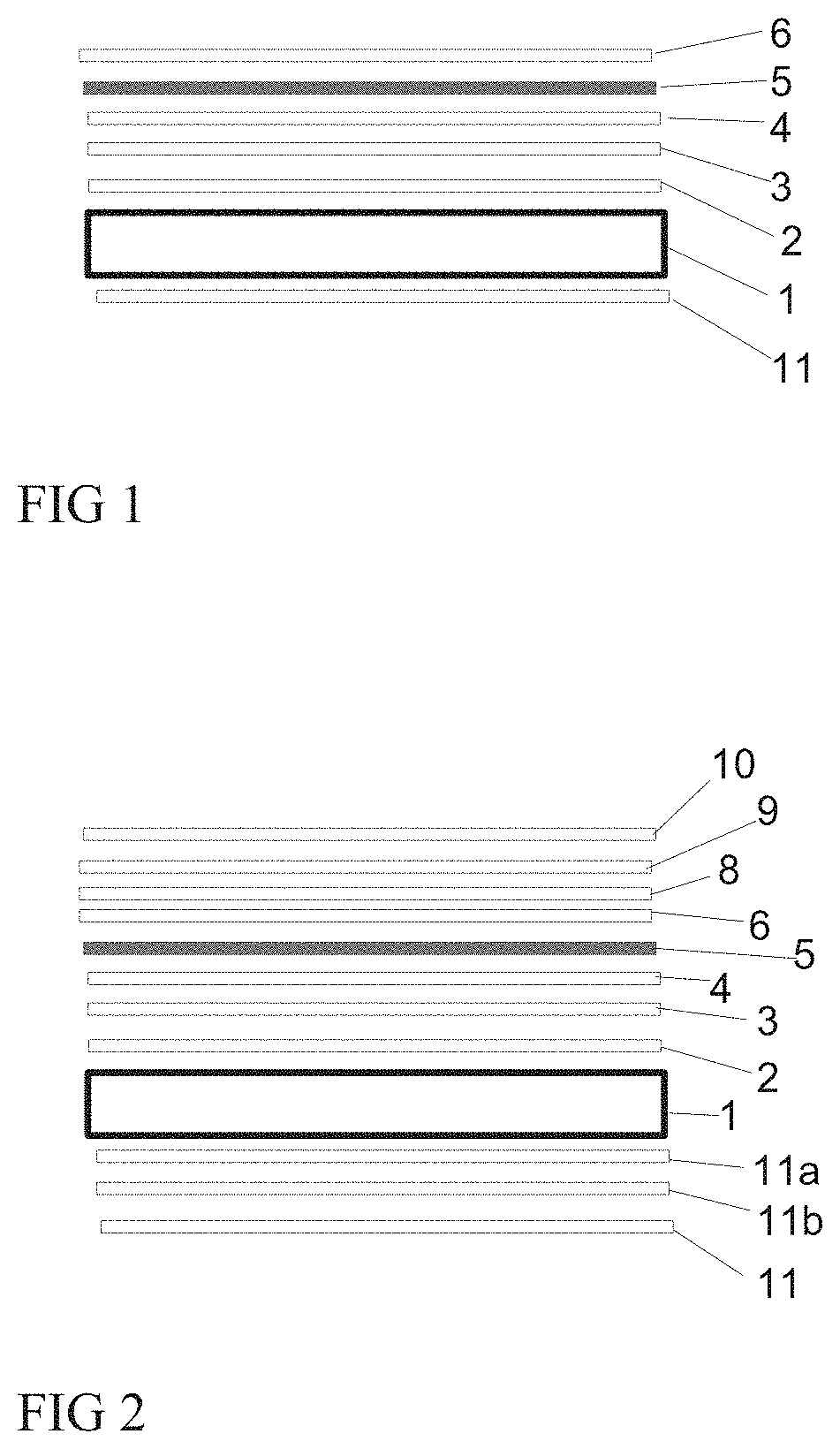Wooden Composite Board with Antistatic Properties
a composite board and anti-static technology, applied in the field of wood-based panels with anti-static properties, can solve the problems of poor electrical conductivity, damage to electronic components, and exacerbate problems, and achieve the effects of good conductivity, good electrical conductivity, and suitable conductivity agents
- Summary
- Abstract
- Description
- Claims
- Application Information
AI Technical Summary
Benefits of technology
Problems solved by technology
Method used
Image
Examples
example 1
on of a First Resin Suspension with Modified Carbon Particles
[0135]For modification, 90 g (or 80 g) of melamine-formaldehyde resin and 8.5 g (or 17 g) of water are added, followed by 0.08 g (or 0.16 g) of para-toluenesulphonic acid. To this aqueous solution 0.7 g (or 1.4 g) of gylcidyloxypropyltriethoxysilane and 0.16 g (or 0.32 g) of ocytyltriethoxysilane are added.
[0136]Then 1.5 g (or 3 g) of CNTs are dispersed in the solution using ultrasound and high shear (15 000 rpm ultraturray) and stirred at 40° C. for 30 minutes. This solution can now be processed like a normal resin system. (In parentheses are the specifications for the sample with 3% CNT in the resin)
example 2
on of a Second Resin Suspension with Modified Carbon Particles
[0137]For modification, 98.5 g water is added and then 0.08 g para-toluenesulfonic acid. To this aqueous solution 0.7 g of gylcidyloxypropyltriethoxysilane and 0.16 g of ocytyltriethoxysilane are added.
[0138]Subsequently, 1.5 g CNTs are dispersed in the solution using ultrasound and high shear forces (15 000 rpm ultraturray) and stirred at 40 ° C. for 30 minutes. This purely aqueous solution can now be added to melamine resin directly at the application machine.
Example 3: Production of a First Wood-Based Panel According to FIG. 1
[0139]A melamine resin is applied to an HDF (8 mm) with a roller as a colorless base coat, which contains 1.5% by weight carbon nanotubes. The nanotubes had a length of about 5 pm and a diameter of 1.2 to 2.0 nm. The solids content of the fleet was about 60% by weight. The melamine resin contained the usual additives (hardeners, defoamers, wetting agents etc.). The melamine resin is dried in a cir...
PUM
| Property | Measurement | Unit |
|---|---|---|
| antistatic properties | aaaaa | aaaaa |
| color | aaaaa | aaaaa |
| antistatic quality | aaaaa | aaaaa |
Abstract
Description
Claims
Application Information
 Login to View More
Login to View More - R&D
- Intellectual Property
- Life Sciences
- Materials
- Tech Scout
- Unparalleled Data Quality
- Higher Quality Content
- 60% Fewer Hallucinations
Browse by: Latest US Patents, China's latest patents, Technical Efficacy Thesaurus, Application Domain, Technology Topic, Popular Technical Reports.
© 2025 PatSnap. All rights reserved.Legal|Privacy policy|Modern Slavery Act Transparency Statement|Sitemap|About US| Contact US: help@patsnap.com

